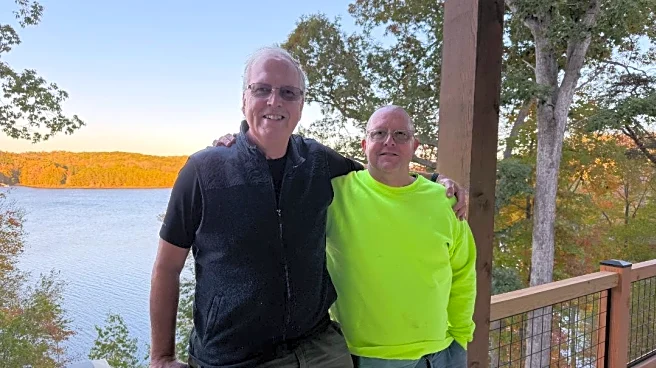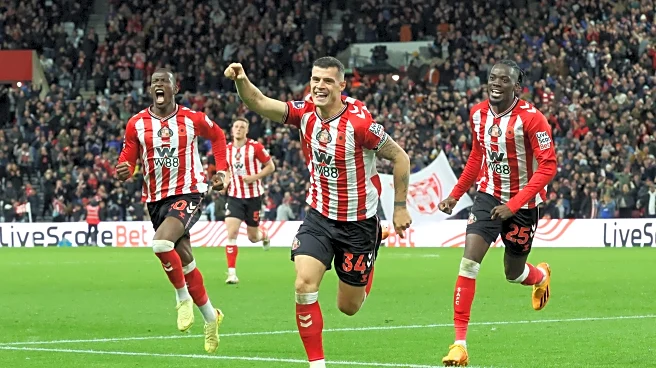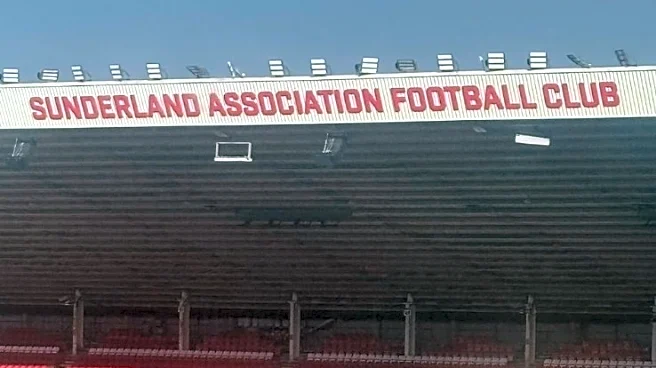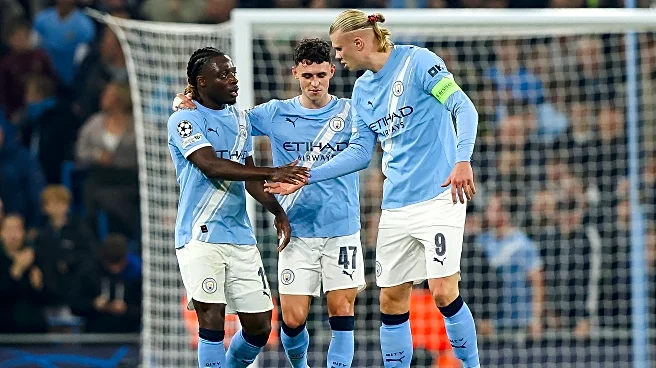Lars: John, how did you first get involved with football? By that I mean Association Football, or “soccer”, not the American version of football, where they hardly use their feet.
John: I was not a fan
of English football – in fact not a football fan at all – until I started watching games with my youngest kid during some early weekend mornings. I confess that I didn’t understand much about the game, but on Saturdays I would get up and, while the rest of the house was sleeping, we would sit together and take in whatever was on TV. It was then that we started watching the Premier League game of the week on one of the national US TV stations. We would talk about it, and I had no idea what was going on; I didn’t know where, say, Everton was, but I would spend all day telling the other kids and my wife how we love Tottenham or we love Bournemouth or whoever. We were just constantly joking about how I am a super fan and it’s the most beautiful game, and I drove the family crazy because they knew I didn’t really understand what I was talking about.
But one Saturday when Sunderland and Newcastle were playing, the announcer said that this is the greatest rivalry in English football, and that piqued my interest. So, while my kid was watching the game, I spent the next 1½ hours going down rabbit holes on Wikipedia, looking at news articles and history pages to see the difference between the two communities of Newcastle and Sunderland.
Soon I felt, “Gosh, I hate these Newcastle people, they are horrible, but those from Sunderland, they’re my peeps”. I love them because I was living in the north-eastern part of the United States, in a post-industrial rust-belt kind of place, not far from Philadelphia, which was re-inventing itself. Sunderland also had shipbuilding, they were trying to bounce back, and the people are the salt of the earth. They were blue-collar, all the stuff that I could relate to both from a sporting perspective and from my time in the US Navy. So, now I was saying Sunderland is my team, and my family still rolled their eyes, saying you’ve been saying this for four months. But I was truly hooked because I now could watch Sunderland AFC on demand. That was around 13 years ago; they were on NBC, and that’s how I got involved. When people said that they had seen a soccer match, I started talking about Sunderland, and most American fans did not have a clue who they were but saw the underdog appeal. Then the Netflix documentary series of course really resonated.
As my interest deepened, I started reading about Peter Reid and Niall Quinn, all while living near Philadelphia, where you were also living. Philadelphia has had a ton of underdog years in sport, and I really related to the Sunderland story because of the unmatched history. One of the neatest things that I ever saw at the Stadium of Light was the oil painting of Leeds versus Sunderland. So, getting into the history of Sunderland, its post-industrial past and the amazing people – how could you not love an underdog?

Lars: It is a team that’s really suffered at various times, as you know, and I recently re-watched the Netflix documentary which was filmed just after our last relegation from the Premier League back in 2017. But my first home game was in 1968; since then the team has been up and down a lot. Obviously, we memorably won the FA Cup in 1973 but were dragged into Barclays League Division 3 in 1987, then a new low point for the club, and Denis Smith brought us back up. We were at another low point, in League One around 2019, when you had the idea for the International Fans’ Day. Please tell us about that.
John: Here’s what happened. I am a simple kind of guy who had a very simple idea that I put across to my friends at the club, Cath Reid and Joanne Youngson, who I had met on trips to Sunderland. They took it to an entirely different level, with the help of the legend Nick Barnes. From going to sporting events in the United States, you will know that at Philadelphia Eagles or Phillies games, the stadium announcer will say, “We welcome Boy Scout troop 432 from West Chester, Pennsylvania” or wherever. The seven or eight people there from the Boy Scout troop will stand and cheer, and then the stadium cheers because it’s nice, and they recognise people that have gone out of their way as a group to be part of the game.
I mentioned this to Joanne, then she introduced me to Cath, and I said: “Wouldn’t it be nice if that could happen?” We don’t need to do anything big; a group of us could just show up, an announcement is made, and I thought that would be cool – not only for the people that are there to make you feel special, but more importantly that the fans in the stands would know Sunderland is not just a team that is known in the North-East of England. There are people from all over the world who are fans. Well, they both took it to a new level and ran with it. It’s amazing how thoughtful, creative, and kind they’ve been about the whole thing. So, yes, I had the idea, but it became way nicer and more far-reaching.

Lars: To be honest, one of the only good things about slipping into the third tier again was that the club made a real effort to become closer to the fans and be a bigger part of the Sunderland community. We are seeing the benefit of all that background work now, as football is front and centre in the future of the “City by the Sea”. That “Power Couple” Joanne Youngson and Nick Barnes have played a big part in that, and I was delighted that you said you attended their recent wedding. For me, the International Fans’ Day was the personification of all this. My son Christopher and I were part of that amazing day in February 2020, which attracted 32,726 fans in total, with a League One win against Ipswich. You were interviewed by Gav Henderson, my Roker Report podcast colleague. But what was your first in-person Sunderland game?
John: I first went to a pre-season game at Darlington with my family, and I know I sound like a broken record, but I found the people so nice.
We met Joanne and Cath again, and those they are friends with, and immediately they take us in like we’re their long-lost cousins! I was a sucker for the culture, the food – pink slices – the weird phrases that I just did not understand at first.
Then there is the hatred of Newcastle, which is great because I love a rivalry, but there are also so many very fascinating layers to the team, and I’ve spent my entire life trying to have interesting friends.
To be honest, that’s why you and I are friends, because I find you immensely interesting, as a Mackem with Norwegian blood.
Lars: We had already met ahead of IFD 2020; I think it was in November 2015 when I lived not far from you in PA, and you hosted an amazing and memorable SAFC NASA event at your home, with a live game. I use the word amazing because of a rare 1-0 away victory at Crystal Palace under Sam Allardyce in a season when we were almost relegated, with Jermain Defoe netting the decisive goal on 80 minutes. Since that televised game, my friend Seth who joined me on the day has become another die-hard US Sunderland fan.
John: But on that fall day in 2015 I wanted to introduce my neighbourhood to this wild world of Sunderland, so we started having get-togethers where we cooked toad-in-the-hole, and at that one we had Rebecca from NASA come down from Canada. There was a realtor from New Jersey, Gavin Frater, who was also born in Sunderland.
It all made for an amazing day, with quizzes and lots of other stuff going on in the background. Seth had the same feeling about comparing Philadelphia to Sunderland – the blue-collar fans, teams that are underdogs – so it’s almost like sharing sporting DNA. It helps to bolster the point that these are sister areas, and I hope that Sunderland continues the same winning uptick as the Philadelphia Eagles, who recently won the Super Bowl.
Lars: My home town experienced an industrial uptick because the EU got the town to close all shipbuilding to support a new industry, and then it was actually Prime Minister John Major who helped to attract the Nissan factory, initially with EU subsidies, and it’s been a huge success. So, Sunderland is the world battery headquarters for Nissan, and the site is extremely productive. There are engineers who will come out at 2:00 a.m. to fix whatever you need. So engineering is in the blood of Sunderland, which has always been the case, and a bit like Philly, it feels like a comeback. The “City by the Sea” is now reflecting that in its footballing resurgence.
John: It is kind of neat, since I understand a lot of different things from supporting the Lads, and it has opened up my realm, so the aperture through which I view my world is a little bit bigger.
It is thanks to people like you, and all of Sunderland, who became a great part of my life. This all came into sharper focus with another personal connection to Sunderland: our daughter had a great time studying in Durham, and her interest in Sunderland blossomed, partly because of liking the Swedish player Joel Asoro.

Lars: That was a rough time in the history of the team, around 2016 to 2018, but what a great connection! However, I sometimes consider how one can tell a real fan from those who don’t care that deeply. It’s about emotional investment in the club; real fans experience changes in mood depending on match outcomes. Their spouse can notice a change in demeanour with a win. Is that you?
John: That is definitely me! The timing of this conversation is a few months after the very impressive rebuild of Sunderland over the summer of 2025, with the signing of 15 new players. How a cohesive team spirit has been built so quickly is remarkable, which must be because of both a real and a philosophical alignment among players and management.
Clearly the head coach Régis Le Bris has been hugely influential in this process, but people like Kristjaan Speakman, Florent Ghisolfi, and our young owner Kyril Louis-Dreyfus need immense credit for laying the foundation for the club’s current success. The acquisition of Granit Xhaka has been a key part of this vision; his signing was a pivotal moment which showcases the club’s ambition and strategic planning.
This is reflected in our current league position.
Lars: We are at a collective high point at the moment, but what about your highs and lows as a Sunderland fan?
John: The highest moment has to be that goal from Tommy Watson in the early summer Championship play-off final. Despite being on his way out of the club, his decisive finish on the day was just phenomenal. I guess the lowest moment was that press conference by the failing former manager David Moyes, in which he condemned us to a relegation struggle. It was defeatist and contrary to Sunderland’s renowned fighting spirit.
Lars: How do you see the rest of this season?
John: One thing – it won’t be boring! As a club we have somehow risen to the challenge of integrating a whole raft of new players while honouring the contributions of last season’s heroes. Dan Ballard, Wilson Isidor, Trai Hume, and Enzo Le Fée have all made a huge impact in the Premier League, and we have to give the club’s management credit for giving opportunities fairly and maintaining squad morale. Not just great morale, but we have seen some fantastic performances.
We also know that fan culture and community are huge, and there is a unique culture among Sunderland fans – their loyalty and the deep emotional ties to the club. What we are seeing at home games is truly remarkable; the noise is incredible, and there is an outstanding connection between the team and the fans, and long may that continue.











